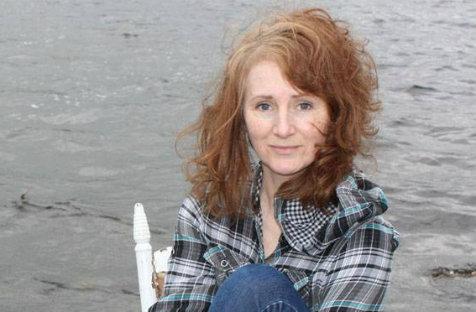At the beginning of Riel Nason’s Commonwealth Prize-winning novel, The Town That Drowned, protagonist Ruby Carson is 14, and according to many of her peers, strange. This isn’t helped by the fact that she has a younger brother, Percy, who is clearly autistic in a time before autism was understood or even known to exist. Percy is academically but not socially intelligent, and is pathologically resistant to change:
‘Only facts. Only information. No perception. No clue. No idea. The only thing that changed about Percy was the fact that the older he got, the more set in his ways he got.’
Percy rigidly adheres to his routines: he goes to bed each night at eight o’clock sharp, and each week he launches a message in a bottle from the bridge near their house, hoping one of the messages will find its way back to him. In a very small town, this unusual behaviour marks Percy as strange, and makes Ruby strange by proxy. But after Ruby hits her head ice skating and publicly babbles about an eerily prescient vision of her community under water, she is perceived by her classmates as strange in her own right:
‘I’m certainly not going to ask Percy for tips on coping. Sure I was familiar with circling the perimeter of outcast territory, being forever linked to him, but it’s completely different now that I’ve been catapulted over the fence. Weird is a disease and once you have it you have it. I’m fourteen years old and infected for good. There’s no miracle cure. There’s no special prescription. I am quarantined all alone on the Island of the Odd. It’s a chronic condition. A lifelong affliction.’
Despite Ruby’s vision, it is Percy who is the Carson family’s greatest cause for concern when a startling announcement is made: a new dam is being built upriver, and their small Canadian town, Haverton, will soon be almost completely underwater.
The Town That Drowned takes place over two years in the 1960s as Haverton’s residents prepare for and come to terms with the drowning of their community. It is a story of change, beautifully navigated and narrated by social outcast Ruby. Intelligent and observant, Ruby is also young and relatively naïve, and Nason adroitly captures all of this in Ruby’s narrative voice.
The news of the flooding is revealed gradually, after Nason has established a small-town atmosphere and developed a colourful cast of secondary characters. Small towns are clearly something with which Nason is familiar; each detail of Haverton and its residents rings true. After news of the dam first reaches the Carson family, Ruby says:
‘This is the story that Miss Stairs told us, and the one that is repeated over and over for the next week. As usual, some parts of it change the more it is told. Mrs. Hogan or else the minister’s wife is said to have fainted. Sometimes the document becomes an overheard conversation or phone call. The professor is an alcoholic or else doesn’t believe in God. Or is forty and still living with his mother. Or is the premier’s first cousin.’
The Town That Drowned is a moving and often funny novel. It is lyrical and quiet, occasionally bordering on slow, but not unappealingly so. In addition to Ruby’s main plotline and that of her family, there are a number of subplots built around characters who you genuinely come to care about. By the novel’s end, you almost feel like you’re a resident of Haverton yourself, and that you’re witnessing your own town’s drowning; that alone is a testament to Nason’s significant talent.
Rating: 4 out of 5 stars
The Town That Drowned
By Riel Nason
Paperback, 270 pp, RRP $29.99
ISBN 9781743314609
Allen & Unwin





